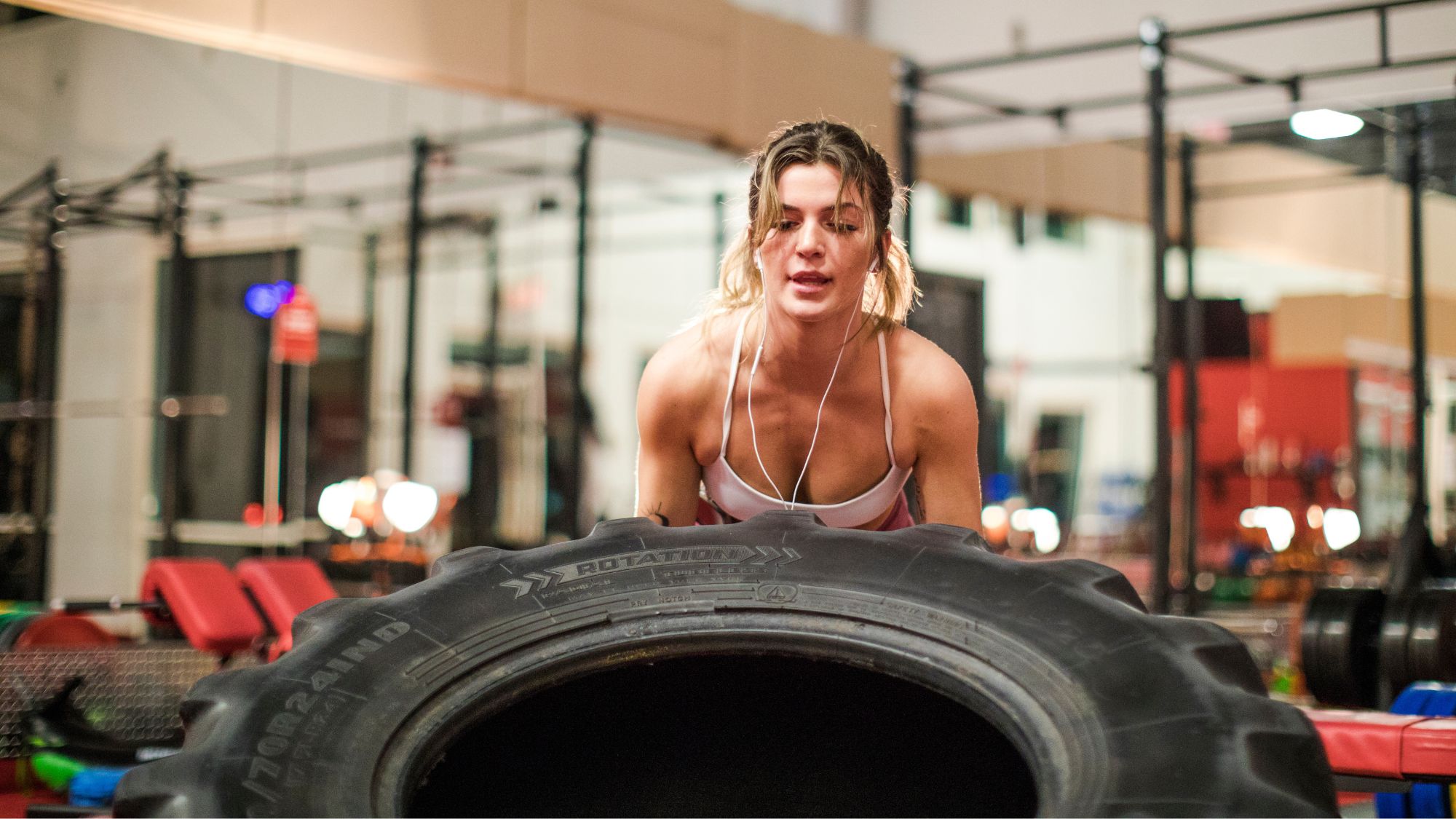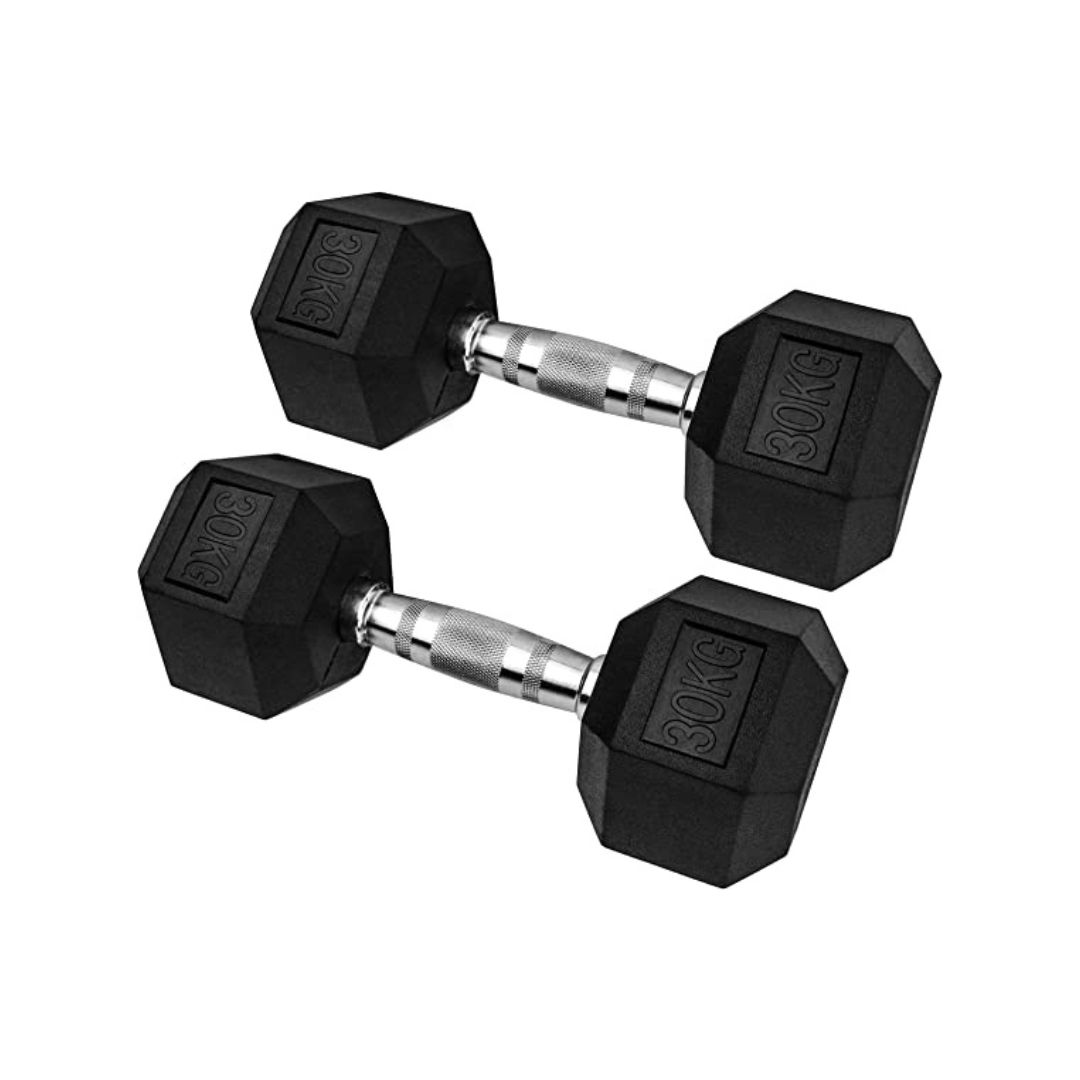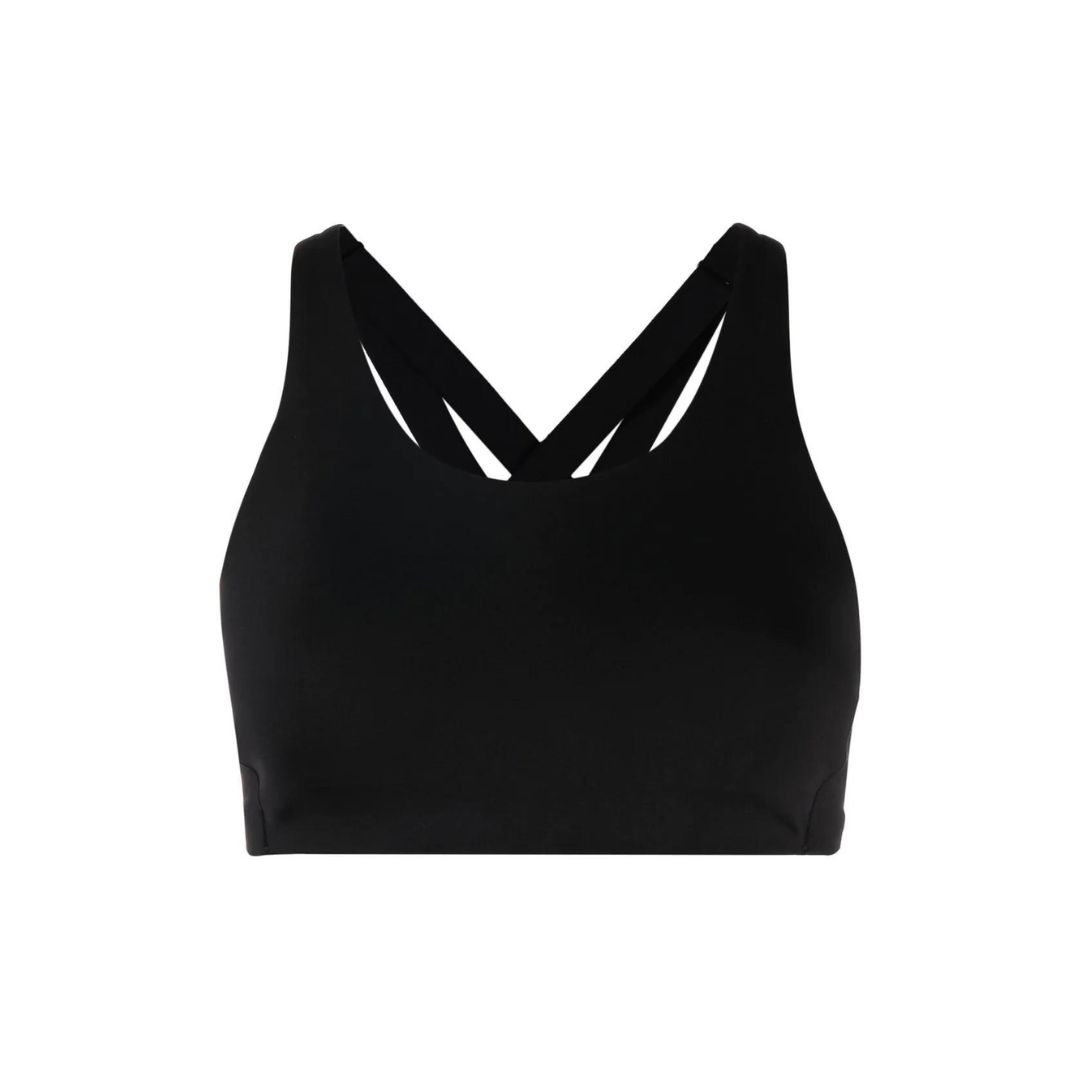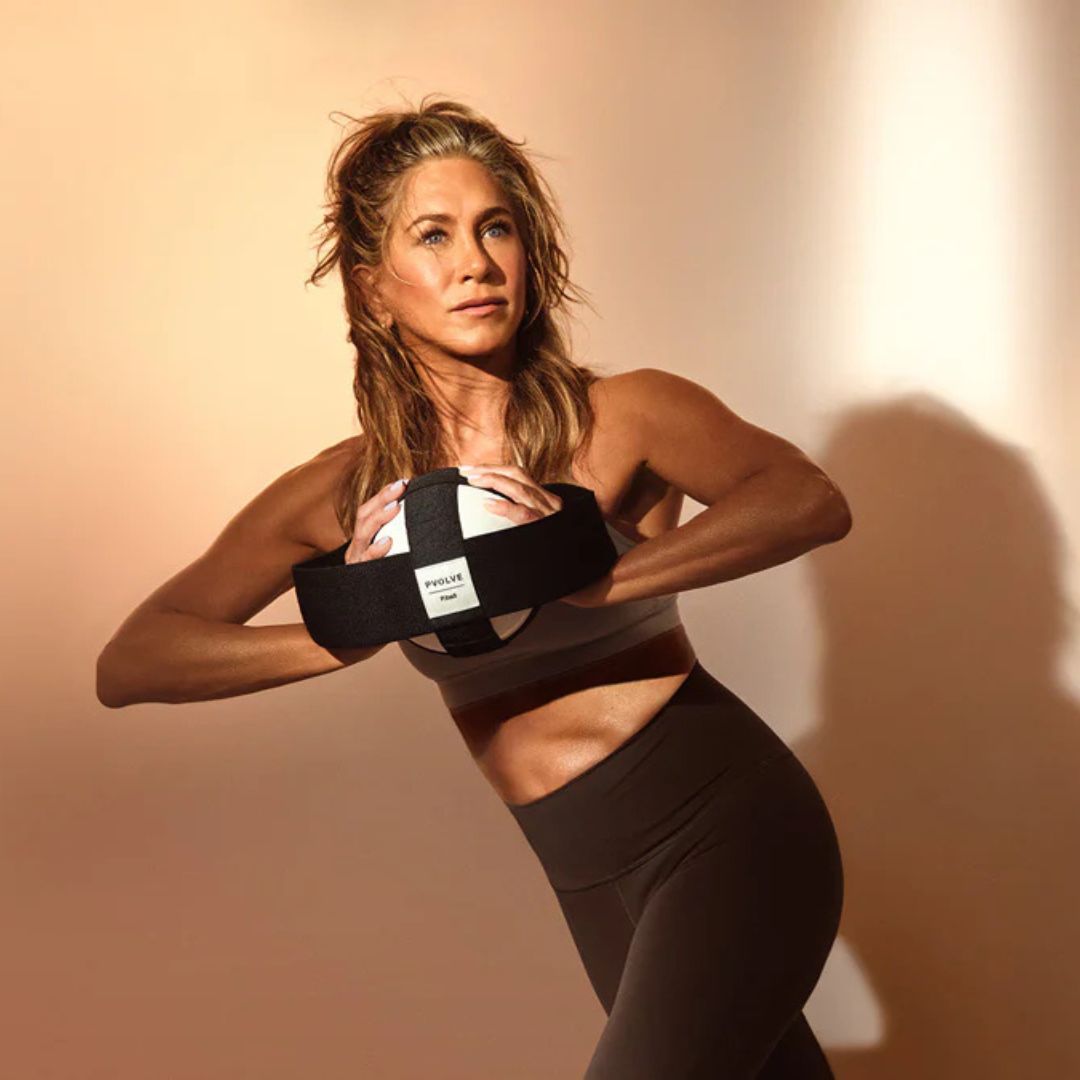Heard of hybrid training? PT's reckon it's undoubtedly the best way to boost muscle, heart health and longevity
Your need to knows.


Hybrid training is the style of physical activity you’re probably already doing, whether you’re aware of it or not. While it may sound like a workout made internet-famous by outlandish exercise combinations and preposterously long sets, in actual fact it features all the components of functional fitness training and can be easily modified for all experience levels.
By no means a new form of moving, hybrid training has become a trend with fitness enthusiasts across social media platforms due to its flexible and arguably open-to-interpretation definition, and the fact that – when applied responsibly – its principles can help you achieve serious results where strength, muscle and cardiovascular fitness are concerned. It’s even thought to have infiltrated the training routines of the Hollywood elite, with Queen Bey – of all people – reportedly a fan, according to a 2016 article in Glamour. Need we say more?
To help you get to grips with the fundamentals of hybrid training – plus, where to start if you’re an absolute beginner – we asked two top PTs to share all the need-to-knows about this popular style of exercise. Don't miss our guides to RPE training, one writer's ideal workout split for maintaining muscle, and Health Editor Ally Head's morning workout routine, while you're here.
Hybrid training is the most well-rounded workout you can do - your guide
What is hybrid training?
Hybrid training, you may not be surprised to hear, got its name because it describes a type of workout or programme that combines two forms of exercise: strength and cardiovascular training. “Although there is no ‘fixed’ version of hybrid training, it generally combines compound movement patterns, such as squats and deadlifts, with higher impact cardio like running or bodyweight HIIT,” says Nancy Best, personal trainer and founder of Ladies Who Crunch.
There are three types of hybrid training that can be customised based on your preferences, experience level and goals, according to personal trainer Aimee Victoria Long:
1. Individual strength and cardio sessions:
“This approach involves separate strength training and cardio workouts on different days, allowing for focused workouts in each area,” says Long.
2. Concurrent training:
This form of hybrid training brings together strength and cardio exercises in the same session, alternating between the two or incorporating circuit-style workouts, Long explains.
Marie Claire Newsletter
Celebrity news, beauty, fashion advice, and fascinating features, delivered straight to your inbox!
3. Integrated training:
“Here, strength and cardio exercises are combined into a single exercise or movement, such as combining strength exercises with plyometric jumps or adding cardio sets between strength sets,” says Long. Think: weighted jump squats or devil press (imagine a burpee-come-snatch with hexagonal dumbbells).
The style of hybrid training that’s best for you depends on your goals and your starting point – how experienced are you, and what level of intensity is best suited to your body and circumstances right now?
@zoe_davis MY HYBRID TRAINING SPLIT RN 🏋🏽♀️🏃🏽♀️ (ps if ya wanna train with me 🔗 in bio!!)
♬ sundress - r7ptor
What are the benefits of hybrid training?
Hybrid training is so popular because it provides many benefits. “Strength training helps improve muscle mass, maintain your bone density and can even help reduce menstrual symptoms, while cardiovascular exercise, like running, helps with your aerobic endurance,” says Long. “This is an important element of overall heart health, as it improves your capacity to pump blood around your body.”
The science isn’t wholly conclusive where the benefits and potential drawbacks of hybrid training are concerned – probably because the parameters of what constitutes a hybrid workout or programme, plus who’s doing it, are so wide and varied. One study, published in 2022, concluded that combined and hybrid style training are the two most effective modalities for improving cardiometabolic health-related outcomes in overweight and obese adults. That said, the ‘interference effect’ of combining both strength and cardiovascular training can have a negative impact on performance and strength and muscle gains – particularly when training intensity and frequency are high. It’s crucial, therefore, to get clear on your goals and work toward a programme that prioritises your wellbeing.
Additional benefits of hybrid training include its ability to improve your functional fitness, making daily activities such as lifting, carrying, walking and climbing stairs easier. Plus, it can be a super efficient way to workout if you’re someone who typically has a jam-packed schedule.
Is hybrid training the same as CrossFit?
While hybrid training shares a lot of similarities with CrossFit and high intensity interval training, it is not the same. “Hybrid training allows for customisation and flexibility in combining different exercise modalities, whereas CrossFit and HIIT are specific training methods with their own structured formats and sessions,” Long explains.
And remember: hybrid training does not necessarily have to be done at a high-intensity level. “The intensity can be adjusted based on individual fitness levels and goals,” says Long. “It is important to listen to your body and gradually increase the intensity as you progress.”
@abbiedennisonfit ♬ Stereo Love(Remix) ( Remix) - 初梦
Is hybrid training good for building muscle?
Hybrid training can absolutely help to facilitate muscle growth and strength gains, but if that’s your main goal then you’ll want to prioritise strength training with progressive overload. “If you’re splitting up your training, you might not get the same volume of resistance training into your week as someone who is lifting weights consistently multiple times a week,” Best says.
Hybrid training for beginners, explained by a PT
Want to give it a go but not sure where to start? Long recommends aiming for three to four workouts per week, starting with cardio- and strength-only sessions as you become accustomed to your new routine, and gradually increasing the intensity – or trialling hybrid single sessions – as your fitness increases. “Focus on mastering the movements and building a foundation before progressing to integrated sessions,” she says. Long also emphasises the importance of proper recovery – and at least one to two rest days per week.
As for exercise selection? “Include a variety of exercises that target different muscle groups and incorporate both strength and cardio elements, when you’re ready,” Long says. “This can include bodyweight exercises, resistance training, and cardiovascular activities like running or cycling.”
Once you’re comfortable with your training schedule, she recommends experimenting with double-day workouts or hybrid single sessions.
@annabelleronnfeldt ♬ Unwritten - Natasha Bedingfield
Double-day workouts
This is where you split a hybrid session into two separate parts, completing the strength portion within one time window and the cardio portion separately. “A morning session could be strength focussed and feature compound movements, such as barbell squats, deadlifts, leg press, bench press and pull-ups, and then in the afternoon you could do an interval running session as your cardio based element, for example, 400 metre runs with 60 seconds rest between sets, repeating for 10 rounds,” says Long.
This approach, she says, can be helpful for beginners as it promotes recovery and enhanced performance, compared with combining the two in one singular workout.
Hybrid single sessions
“Combining a mixture of strength and cardio work, complete as many rounds of this workout – or one similar – as you can in 30 minutes,” Long says. “This style of workout – known as an AMRAP (as many rounds as possible) – is as difficult as you make it. The harder you work, the tougher the workout, which makes them great for all fitness levels as you can scale accordingly.”
- 8 Dumbbell thrusters
- 8 DB devils press
- 8 push-ups
- 8 DB clean and press
- 8 Burpees
- 800 metre run
If you’re new to hybrid training, you’re recovering from injury or you’re working towards specific goals, it’s best to work one to one with a personal trainer who can create a bespoke training plan for your specific circumstances, if this option is available to you. “A good coach will also give you tips and corrections, and they’ll provide accountability too,” says Long.
Shop MC UK approved workout kit now:

Increase the challenge of your at-home hybrid training sessions with a pair of hexagonal dumbbells.

Nike's Metcon trainers have been specifically designed for CrossFitters and people who lift, making them a great choice of shoe for hybrid training sessions. Note: they aren't suited to cardio-only workouts, however. Scroll our edit of the best running trainers for cardio-suitable shoes.

Hybrid training sessions – particularly those featuring high-intensity or plyometric exercises – may require a little more support from your sports bra, which is where the best sports bras come in. lululemon's Energy bra provides a high level of support for B-DDD cups.

Abbi Henderson is a freelance journalist and social media editor who covers health, fitness, women’s sport and lifestyle for titles including Women's Health and Stylist, among others.
With a desire to help make healthcare, exercise and sport more accessible to women, she writes about everything from the realities of seeking medical support as a woman to those of being a female athlete fighting for equality.
When she’s not working, she’s drinking tea, going on seaside walks, lifting weights, watching football, and probably cooking something pasta-based.
-
 Jump training workouts are being hailed as the best longevity workout you can do - a top personal trainer shares their guide
Jump training workouts are being hailed as the best longevity workout you can do - a top personal trainer shares their guideJump to it...
By Katie Sims
-
 I’m a bride who loves injectables—here are the dos and don’ts of getting them ahead of your wedding
I’m a bride who loves injectables—here are the dos and don’ts of getting them ahead of your weddingA game-changer, if done correctly
By Tori Crowther
-
 The 90s-inspired wispy, ‘sitcom fringe’ is my new obsession—it’s lightweight and perfect for summer
The 90s-inspired wispy, ‘sitcom fringe’ is my new obsession—it’s lightweight and perfect for summerBring back the nostalgia
By Jazzria Harris
-
 Jump training workouts are being hailed as the best longevity workout you can do - a top personal trainer shares their guide
Jump training workouts are being hailed as the best longevity workout you can do - a top personal trainer shares their guideJump to it...
By Katie Sims
-
 Bent-over rows are raved about for building upper body strength - 7 variations that are better for building muscle, strength and tone
Bent-over rows are raved about for building upper body strength - 7 variations that are better for building muscle, strength and toneDon't skip upper body day.
By Anna Bartter
-
 Spring has finally sprung - 6 best outdoor workouts that are totally free and boost both body and mind
Spring has finally sprung - 6 best outdoor workouts that are totally free and boost both body and mindSoak in the nature and boost Vitamin D *and* endorphins.
By Anna Bartter
-
 Rotational exercises are an often-forgotten workout move powerhouse - 7 that build core stability and reduce injury
Rotational exercises are an often-forgotten workout move powerhouse - 7 that build core stability and reduce injuryEasy, effective and essential? We're all in.
By Anna Bartter
-
 It's the trending workout of the moment and Jen An's go-to - but what actually is Pvolve and is it effective?
It's the trending workout of the moment and Jen An's go-to - but what actually is Pvolve and is it effective?Workout like an A-lister - because you're worth it.
By Anna Bartter
-
 Lateral exercises are arguably the best moves you can do to supercharge balance and coordination - 5 to try
Lateral exercises are arguably the best moves you can do to supercharge balance and coordination - 5 to tryTry these moves for a well-balanced workout.
By Anna Bartter
-
 Road To Recovery: As marathon training ramps up - 5 tips for maintaining motivation, from a 9x marathon runner
Road To Recovery: As marathon training ramps up - 5 tips for maintaining motivation, from a 9x marathon runnerPlus, I share the joy of returning to running and the kit I've been loving recently.
By Ally Head
-
 Experts are calling the 4-2-1 method one of the most effective fitness routines you can do, period - so, is it?
Experts are calling the 4-2-1 method one of the most effective fitness routines you can do, period - so, is it?Your need-to-knows.
By Katie Sims